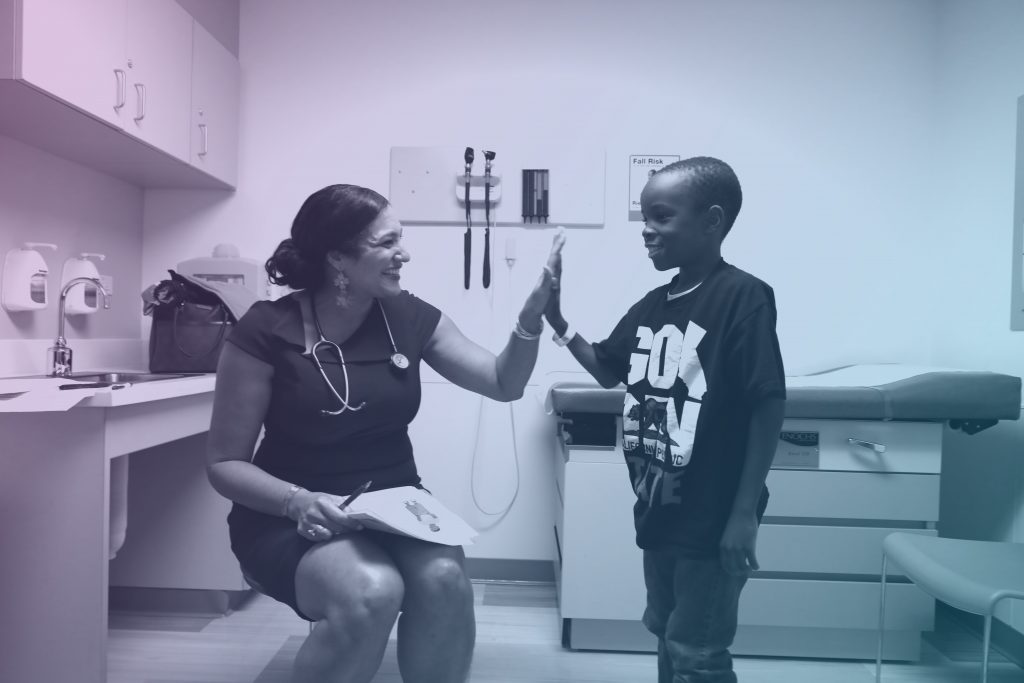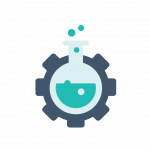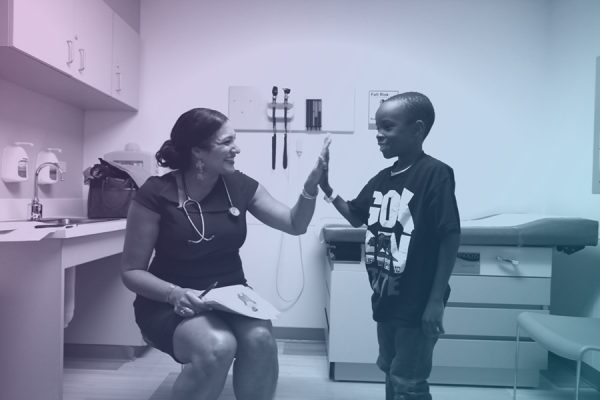Background
Since the landmark CDC-Kaiser Permanente Adverse Childhood Experiences (ACE) Study in 1998, dozens of studies have expanded on the association between ACEs and chronic disease in adults. Newer findings also link ACEs with a number of childhood ills, including asthma, developmental delays, mental health issues, and learning difficulties. Emerging evidence shows that early detection, intervention, and the promotion of resilience and protective factors can mitigate the detrimental effects of childhood adversity and trauma. Recent research on intergenerational ACEs and the impact of positive childhood experiences (PCEs) on trauma suggests that a range of factors from positive parenting to support from teachers and other adults can offset and even reverse the damage from ACEs and toxic stress.
Early intervention, especially in the first five years of life, presents the best opportunity to protect children from the most harmful effects of toxic stress, since the brain and other biological systems are most adaptable and “plastic” at this stage. Safety net health care providers, who care for low-income and children of color disproportionately exposed to adversity, are uniquely positioned to identify children and caregivers who have been affected by adversity and trauma, or who are at risk. They can promote resilience and protective factors when care is delivered and link families to needed resources.

The Center for Care Innovations and Genentech Charitable Giving have been helping lead the charge in the Bay Area to support safety net organizations in addressing childhood adversity since 2018 when we launched the Resilient Beginnings Collaborative (RBC). RBC was a two-year learning program that engaged seven Bay Area organizations. RBC provided support, resources, and dedicated time to train providers and clinic staff to understand trauma-informed care, adopt a trauma- and resilience-informed culture, understand and respond to adversity and toxic stress, and deepen the relationships with patients and their families. As a result, teams across the program saw improvements at their organizations in several of key areas, including:
- Increased knowledge and understanding of what it means to be trauma- and resilience-informed, while training more than 1,000 staff.
- Improved assessment and response for patients, with six out of seven teams starting or expanding screening for trauma and resilience.
- Improved support for the well-being of providers and staff, acknowledging that staff need to be well to serve their patients well.
But it’s a long journey to becoming a “healing organization” — one that reduces trauma by being reflective, makes meaning out of the past, is collaborative and growth- and prevention-oriented, values equity and accountability, and has relationship-oriented leadership. The COVID-19 pandemic and the exponentially increased stress on our communities’ physical, emotional, and financial well-being have created a new imperative for clinics to embrace trauma- and resilience-informed care to support both patients and frontline staff. So much looks different in this new context:
- How has COVID-19 impacted the well-being and fortitude of clinic staff and clinicians?
- What does it look like to build a trauma-and-resilience-informed culture in a virtual care environment?
- Are clinics screening for ACEs or resilience in person during well-child visits, are they screening remotely, using a hybrid approach, or have they postponed screening in the wake of COVID-19?
- What kind of follow-up support and guidance are they providing patients, and how can this support best incorporate family strengths during a time when many schools are closed and there are increased demands on caregivers?
- How are clinics working to build equity and anti-racism into the foundation of their organizational cultures and practices?
- What new partnerships in the community need to be developed in order to support patients and families so they can be healthy and thrive?
Resilient Beginnings Network (RBN) will continue what Resilient Beginnings Collaborative started by deepening and spreading this important work in Bay Area pediatric and family practice safety net settings and bringing clinics together to innovate and test solutions to these questions. The dual pandemics of structural racism and COVID-19 have had a deep impact on families and safety net providers. As such, equity and racial justice will be core to the program, along with a focus on supporting the well-being of safety net clinic staff and providers and what it looks like to do this work in a post-COVID, more virtual world.
Program Structure & Core Content
The goal of RBN is to support organizations to advance pediatric care delivery models that are trauma- and resilience-informed. The program will build on existing organization-led initiatives and interventions in childhood adversity so that clinics can further test, develop, and strengthen their role in addressing trauma and promoting resilience.
RBN will offer access to training, tools, expertise, and learning opportunities with other grantees in the network, as well as individualized support for each grantee organization. An interdisciplinary team of expert coaches and faculty will provide consultation, coaching, and learning sessions throughout the program. These subject matter experts will include representatives from Trauma Transformed, UCSF Benioff Children’s Hospital Oakland, and health centers across the country who have deep knowledge and experience with addressing childhood adversity, embedding a culture of anti-racism into their organization, and developing trauma-informed systems. The Center for Community Health and Evaluation will develop a capacity assessment, document lessons, and assess impact on organizational practice change and staff and patient experience.
Core program content will cover concrete change ideas and capacity for trauma- and resilience-informed pediatric care delivery. Content areas will include:
- Clinic/Organization Environment: Establish or deepen a trauma-informed and healing-centered clinic and organizational environment, including improved support for staff well-being.
- Prevention & Promotion: Promote resilience and protective factors for young children and their families that can help prevent and mitigate the damage from ACEs and toxic stress.
- Clinical Practices: Test, implement, and spread clinical practices to prevent, identify, respond to, and heal trauma and early childhood adversity.
- Community Relationships: Build and strengthen authentic community relationships so that referrals and coordination efforts meet community, patient, and family needs.
Special attention will be given to themes that emerge in each of these content areas, including patient and family engagement, equity and racial justice, and using family strengths-based approaches.
Participating teams will be supported with a variety of technical assistance methods, including:
- Virtual and in-person learning sessions to explore best practices with experts and peers
- Subgroup meetings of teams with a similar focus or similar challenges
- Subgroup meetings of participants with similar roles (e.g. pediatricians, nurse practitioners, behavioral health providers)
- Individualized coaching for each team with trauma-informed experts
- Site visits to exemplar organizations with mature trauma-informed practices
- Online community with peer and expert generated tools and resources
- Support with defining metrics to measure and evaluate your organization’s progress
- Connecting grantees to technical expertise and other safety net clinics leading efforts at their organizations
Because of the COVID-19 pandemic, all support during the first year will be provided virtually. We hope to be able to offer in-person learning sessions and site visits in the second and third years of the program.
Additionally, throughout the program, participating organizations will contribute to broader learning for the broader ACEs movement, which includes pediatric primary care clinics and others working to improve the health and well-being of young children and their families nationwide. Contribution to broader learning includes:
- Participating in evaluation and communications activities, such as contributing to RBN’s data and story gathering, to better understand effective strategies and approaches.
- Actively engaging with other members of the RBN learning community (e.g., clinics participants, CCI, funders) to share best practices and strengthen collective knowledge.
- Engagement with similar learning communities or initiatives across California (e.g., CALQIC, ACEs Aware)
year one: understanding the current state and strengthening capacity

In the first year of the program, teams will seek to more deeply understand their current pediatric care delivery model and overall organizational and clinic environment. They will engage with stakeholders to determine the focus of their work in RBN by:
- Identifying strengths and opportunities using a combination of quality improvement and human-centered design tools and methods.
- Building buy- in and support from clinical and administrative leadership.
- Sparking new ideas and co-designing approaches with input and support from staff, providers, leadership, patients, caregivers, and community members.
- Charting their course by setting goals and defining a measurement strategy with support and feedback from subject matter and evaluation experts, as well as peer teams who are also on this journey.
- Testing and measuring the impact of changes to establish or deepen a trauma-informed clinic/organization environment; and trying changes in at least one other focus area (prevention and promotion, clinical practices, community partnerships).
- Sharing successes and lessons early and often.
Years two and three: go deeper in one or more key areas with a goal of implementation and spread

At the end of year one, teams will be asked to “pitch” to their leadership, as well as RBN program staff, what they learned through their first year of testing and what they want to accomplish by the end of the three year program. As part of this process, teams will continue to deepen their year one goals and also have the opportunity to pivot based on their experimental successes and failures. Teams will be able to refine their goals and measurement strategy.
Potential areas that teams could focus their work and go deep on in year two and three could include:
- Clinic/Organization Environment:
-
- Understanding the changes made to create a welcoming and affirming virtual or in-person environment for staff, patients, and caregivers.
- Training staff and clinicians in trauma-informed care and anti-racism and understanding the impact of the training on changes in knowledge, confidence, attitudes.
- Measuring the extent of and experience of staff, patients and/or caregivers’ engagement in clinic efforts (screening protocols, education and training, etc.) to become more trauma- and resilience-informed.
-
- Prevention & Promotion
- Starting or spreading ACEs or early adversity screening and response.
- Testing approaches to screen for and promote resilience and protective factors/strengths.
- Testing and spreading strategies that support social-emotional development.
- Clinical Practices:
- Understanding changes on clinician and staff experience, including well-being, resilience, and burnout.
- Starting or expanding education and peer-to-peer support for caregivers.
- Integration with prenatal/delivery providers to improve support around birth and during the newborn period.
- Community Relationships:
- Improve linkage and coordination with community services and resources for young children and caregivers.
- Using influence as health care providers toward transforming systems outside of the clinic to reduce harm to children and families.
Who’s Eligible?
San Francisco Bay Area-based organizations that provide comprehensive primary care services to underserved pediatric populations — children birth to 5 years old and their caregivers who are uninsured or enrolled in Medicaid— are eligible to apply. The Bay Area includes the following nine counties: Alameda, Contra Costa, Marin, Napa, San Francisco, San Mateo, Santa Clara, Solano, and Sonoma. Organizations do not have to be headquartered in one of these Bay Area counties, they must operate at least one site in them to be eligible. Qualifying organizations include:
- Federally Qualified Health Centers (FQHCs) and FQHC Look-Alikes.
- Community clinics, rural health clinics, and free clinics.
- Ambulatory care clinics owned and operated by public hospitals.
- Indian Health Services Clinics.
- Pediatric and family practices caring for majority underserved patients (uninsured and Medicaid).
Organizations will be selected with the goal of achieving diversity in terms of geography, organization size, patient population, and experience addressing early childhood adversity and trauma.
Bay Area organizations that have participated in past training programs and grant opportunities aimed at screening children and adults for ACEs — such as in the Resilient Beginnings Collaborative, the California ACEs Learning and Quality Improvement Collaborative (CALQIC), and ACEs Aware — are encouraged to apply to RBN.
Regional clinic consortia and statewide clinic associations are not eligible to apply.
What Makes a Strong Applicant?
- Pediatric Focus: Successful applicants must have at least one primary care pediatric provider (e.g. physician, nurse practitioner, or physician assistant) that provides primary care for children birth to 5 years old).
- Organizational Commitment to Trauma- and Resilience-Informed Care: Successful applicants will bring together a dedicated core team committed to change in their organization, specifically deepening and spreading trauma- and resilience-informed care in pediatric settings. Successful applicants may be anywhere on their journey toward trauma- and resilience-informed care.
- Interest in Applying an Equity and Racial Justice Lens: Successful applicants must have an interest in using an equity and racial justice lens for their work in the program. Examples of this may include, but are not limited to: the staff has an understanding of the impact of historical trauma and structural racism on patients and families, leadership and staff are representative of the patient population, the organization disaggregates data and uses it to understand and act on inequities, patients and families representative of the patient population are engaged in efforts to understand and solve problems and improve care.
- Willingness to Both Teach and Learn from Peers: Successful applicants will have an interest in deeply engaging in the program’s learning community. This includes having the core team attend program activities and share progress and lessons regularly and frequently in a variety of ways (online portal, webinars, etc.).
Participant Expectations
This program is intended to be flexible and responsive to the needs of participants, so we ask each organization to act as a partner in shaping the program by committing to the following
- Leadership Buy-In: Successful organizations will have leadership that is committed to addressing childhood adversity and understanding how a trauma-informed approach relates to both organizations and clinical interventions. We expect strong clinical and administrative leadership support from the Chief Medical Officer and Chief Operating Officer (or the equivalents), as demonstrated through a letter of leadership support outlining their commitment to directly engage in the program in at least 4 ways:
- Join a coaching call in year one focused on how to support the team’s action plan.
- Attend a virtual or in person session at the end of year one (expected fall 2021, date TBD) to hear the team’s pitch about where to go deeper in years two and three.
- Meet with the team in year three to discuss spreading and sustaining progress and accomplishments in the program to date.
- One additional touch point to be determined
- Continuity and a Dedicated Team: Four to six individuals are required to be committed members of a core RBN program team. The team will participate in program activities and work on implementing activities within their organization. The team should include:
- A project lead who is responsible for day-to-day activities and can coordinate the work of the team.
- A primary care provider that cares for children birth to 5 years old such as a pediatrician, family medicine doctor, pediatric nurse practitioner, or a family nurse practitioner to champion changes in their clinic and influence change across the organization.
- A clinical leader, such as a behavioral health director, medical director, or chief medical officer with decision making authority over trauma informed care efforts in the organization.
- At least one frontline staff (e.g. MA, front office, call center representative) who will co-develop, test and implement changes.
- A senior administrative leader sponsor (e.g. Chief Executive Officer, Executive Director Chief Operating Officer) who can ensure protected time for team members to participate in program activities and lead change within their organization.
- Recommended, if available, but not required:
- Behavioral health provider (strongly recommended if clinic has behavioral health resources)
- Family specialist, navigator, peer support specialist, or community health worker that works with families with young children
- Patient or family advisor(s)
- OB-GYN or midwife (recommended if you are planning to focus on integration with prenatal and delivery providers)
- Participation in Program and Evaluation: Team members are expected to fully participate in program activities, including virtual sessions, coaching calls, online forum, and in-person sessions (when it is safe to convene in person). Teams will be asked to complete defined pre-work assignments for virtual and in-person sessions, as well as regularly share stories about successes and challenges, lessons learned, and the impact of their work. Teams will be expected to submit quarterly progress reports that include qualitative and quantitative data. Teams will work closely with an external evaluator to complete a capacity assessment approximately four times during the program and to identify and report metrics that are relevant to their efforts.
- Feedback: Teams are expected to provide feedback to CCI and program evaluators to refine and improve the program content and delivery methods as the program progresses.

